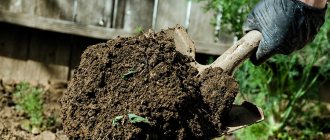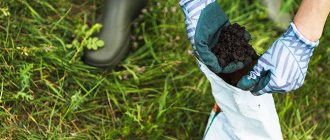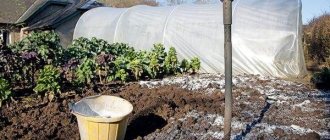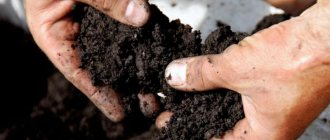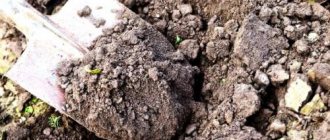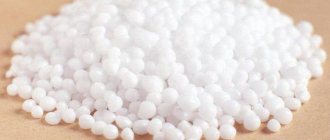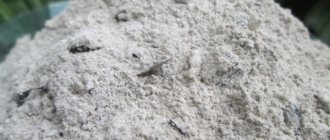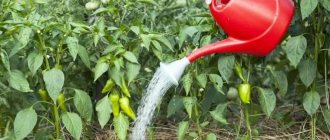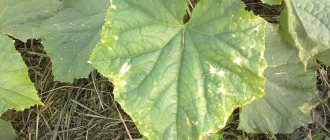How to fertilize the soil in the fall if there is no manure? Many summer residents ask this question. After all, autumn is the ideal time to apply fertilizers. In winter, the soil rests, and all the organisms that are in it allow the beneficial components to be processed. In addition, applying fertilizers in the fall allows you to prepare your garden for spring.
Synthetic or natural
After harvesting, it is necessary to prepare the soil for the next season. However, not all summer residents know how to fertilize the soil in the fall if there is no manure? Some people think that it is better to use several complex mixes at once. Some people, on the contrary, recommend using various fertilizers separately. This is the wrong approach. After all, some natural and synthetic additives can lose most of their beneficial properties during the winter.
To use fertilizers correctly, you need to know exactly which ones can be applied to the soil in the fall and which ones should be left until spring. In addition, it should be noted that not all supplements are universal. Some can only be used on trees, while others can only be used on soil intended for planting vegetable crops.
Preparing the soil for fertilization
Preparing the land for fertilization consists of several stages. First, the entire crop is harvested to free up the soil for the necessary substances. After collecting all the fruits, weeds and remnants of tops with roots are removed.
Advice! It is better to burn the tops, grass and roots and prepare a nutritious ash solution from them.
The land is well watered, especially berry crops. The roots of berry crops are in the upper layers of the soil, and autumn watering will benefit them. Fertilizers applied before winter should dissolve in the ground. Thus, the plants will receive the necessary substances for nutrition.
The roots of bushes and fruit trees are deep. Raspberries take root to a depth of 50 to 60 cm, and fruit trees - up to 2 m. This must be kept in mind when watering. Water consumption will be high, but it will help to get a good harvest for next year.
Bird droppings
So, how to fertilize the soil in the fall if there is no manure. Bird droppings are considered the most concentrated organic fertilizer. This fertilizer is ideal for strawberries. However, in spring and summer it is very difficult to apply such fertilizer. After all, bird droppings are a caustic substance that can destroy a plant. Especially if the solution gets on the roots of the bush. In addition, fertilizing must be carefully prepared. Bird droppings are fermented, then settled and diluted with water.
It is best to use this fertilizer in the fall. Such organic matter can be added to the soil, which will then be dug up. Bird droppings do not need to be prepared or diluted. Moreover, there is no need to apply fertilizer annually. In addition, this can negatively affect the condition of the plants. It is better to apply bird droppings to the soil once every few years.
Green manure
Green manures are an excellent substitute for organic fertilizers; you just need to consider what crops will be planted after them. Green manure is sown immediately after harvesting - at the end of August or September.
Table: use of green manure
| Green manure | The resulting effect of application | What can you plant after it? |
| Legumes (vetch, peas, lupine, alfalfa, clover). | Enrich the soil with nitrogen in an easily accessible form. | Solanaceous (potatoes, tomatoes, eggplants, peppers), cruciferous (cabbage, radishes) and pumpkin (cucumbers, zucchini, pumpkin) crops. |
| Buckwheat. | Reduces soil acidity, enriches with phosphorus and potassium. | All crops except rhubarb, sorrel and spinach. |
| Cereals (oats, rye, barley). | They increase the nitrogen and potassium content, increase air and moisture permeability, and repel nematodes. | Nightshade and pumpkin. |
| Cruciferous vegetables (mustard, rapeseed, Shrovetide radish). | They increase the content of potassium and phosphorus, help get rid of nematodes, slugs and wireworms. | Nightshade, pumpkin, umbelliferous (carrots, dill). |
Video: green manure in autumn
Application of compost
How to fertilize the soil in the fall if there is no manure and bird droppings? In this case, many summer residents use compost, distributing it throughout the site. Often such fertilizer is dug up along with the soil. You can also cover the soil with compost in a continuous layer before plowing. However, according to experts, these are not the most effective methods.
After the entire crop has been harvested from the beds, all weeds should be weeded out. After this, there is no need to dig up the soil. It should be covered with an even layer of compost. Finally, it is recommended to pour the additive with an EM preparation, previously diluted in accordance with the instructions. After processing, the soil should be loosened with a Fokin flat cutter and not touched until spring. This method of adding compost helps maintain soil fertility. The earth does not turn sour.
Organic fertilizers are the basis of autumn care
When choosing how to fertilize your garden before winter, first of all you think about organic matter. Fresh manure in the spring will harm plants by burning their roots, but in the fall it’s a different matter. Over the long winter period, fresh manure or droppings will completely rot and saturate the soil with nutrients, turning it into ideal fertile soil.
Chicken droppings and ungulate manure are one of the best and most affordable types of fertilizers. And raising animals yourself turns it into the number one choice, because you get it completely free of charge. Due to the high concentration of nutrients, manure can be applied to the soil once every three years, and this will be enough to noticeably increase soil fertility. The application rate for this type of fertilizer is 400 kg per hectare of land.
The required amount of manure is distributed evenly over the surface of the earth and dug to a depth of two shovels. Remaining in this form until spring, the concentration of nutrients in the soil will become optimal for planting young plants. To enhance the effect, lowland peat can be added simultaneously with manure, which, unlike highland peat, alkalizes the soil and has a beneficial effect on fertility.
If there are no pets on the farm, but there is a stove, you can use ash to answer the question of how to fertilize the beds in the fall. Ash can reduce soil acidity, so it is advisable to conduct a soil test before using it. It is used for digging at the rate of 1 kg per square meter of land no more than once every 4 years.
If winter fertilizers for the garden must be not only effective, but also budget-friendly, you can use grass chaff. This year's weeds and plant remains are finely chopped and laid out throughout the garden in grooves at a depth of 7 cm. Next, you need to sprinkle the fertilizer with a thin layer of soil, lay out a second layer and sprinkle it again. It is necessary to use this technology after the autumn digging of the garden. Remaining in this form until spring, the remains of the plants rot, turn into a high-quality nutrient medium and are evenly distributed over the soil with spring digging. To fertilize the soil with chaff, do not use the remains of grapevines and leaves, nut leaves and nightshade plants.
What plants is it suitable for?
Thanks to this fertilizing, there is no need to apply additional fertilizing in the spring. This fertilizer is suitable for potatoes. In the fall, compost is distributed throughout the site, and tubers are planted in the spring. Harvest dates are shifted by approximately 2 weeks. It is worth noting that this fertilizer is suitable for all early vegetable crops.
What fertilizers should be applied in the fall for fruit trees? Many people recommend using compost. After all, the garden also needs additional nutrition. It is worth noting that such a substrate is often used to protect the root zone of all fruit trees. To do this, compost is laid in a fairly thick layer around the entire diameter of the trunk. The fertilizer is left here until spring. When the first warm days arrive, the soil around the trunks must be carefully loosened. Thanks to such manipulations, the beneficial components contained in the substrate penetrate deep into the soil and begin to nourish the roots of trees and shrubs.
Phosphorus
Phosphorus in fertilizers is contained in a form that is difficult for plants to reach. But over the winter, as a result of chemical processes, it turns into an easily accessible element.
Phosphorite flour
This is a real find for supporters of organic farming. No chemicals - completely natural product. It is obtained by finely grinding phosphorites - sedimentary rocks. It contains 19 - 30% phosphorus.
This fertilizer is especially effective on acidic soils (1) - it alkalizes them and brings them closer to a neutral reaction.
How to use. Fertilizer is evenly scattered over the surface of the soil, and then the area is dug up using the bayonet of a shovel. The consumption rate is 30 kg per hundred square meters.
Peculiarities. Phosphorite flour cannot be mixed and applied to the beds at the same time as lime and potassium carbonate.
Double superphosphate
This is the most popular phosphorus fertilizer; it contains a lot of phosphorus - 40 - 50%. It is used for basic application to the soil and for fertilizing (2).
How to use. Fertilizer is scattered around the area and then dug up. The fact is that phosphorus in this fertilizer is in the form of phosphoric acid. But it practically does not move in the soil - wherever it is added, it becomes fixed there. Therefore, superphosphate must be embedded in the ground to the depth of the bulk of the roots. If you just scatter it over the surface of the area, it won’t do any good.
Peculiarities. It is best to add superphosphate together with organic matter - compost or humus. Then the efficiency of the fertilizer increases noticeably. But you cannot mix it with urea, ammonium, sodium and calcium nitrate, potassium carbonate, lime, dolomite, and chalk.
Should I use ash?
Organic fertilizers should be applied wisely to the soil in the fall. Ash should also be considered a natural fertilizer. This substance is rich in potassium. It is usually applied to heavy, clay soils. If the soil is soft, then there is no point in using ash as fertilizer. It will be washed away from the soil structure by spring meltwater. As for the application rate, only a glass of ash is required per 1 square meter.
It is worth noting that this fertilizer is ideal not only for replenishing potassium reserves in the soil, but also for combating certain pests that can cause severe harm to certain crops. To do this, the area that will be used for planting garlic and onions must be thoroughly sprinkled with ash. This should be done on the last warm autumn days. The ash should cover the beds with a fairly dense layer at least 1 centimeter thick.
This organic fertilizer can be used to protect winter garlic and onions. In this case, it is recommended to reduce the amount of ash. The layer thickness should be no more than 20 millimeters.
We add humus and compost in the fall
Compost is an affordable and useful fertilizer obtained from food and plant waste. Humus (rotted and decomposed manure or leaf litter) is also a universal remedy for improving the structure of the soil and its properties.
Humus and compost can also be added in both spring and autumn at the rate of 1-2 buckets per 1 sq.m. When applied in the fall, some of the beneficial substances from these fertilizers can be washed away by melt water, but over the winter the organic matter will be saturated with moisture, finally “ripe” and easily mix with the soil, willingly and evenly releasing the rest.
The exception is compost made from wood waste - shavings, bark, branches - which is laid exclusively in the fall when digging up the garden. If you add it to the soil in the spring, the decomposition process will take over the lion's share of nutrients, depriving the plant of them.
- How to make the right compost for feeding plants
Fertilizing the soil is an important part of plant growing activities. And compost is considered one of the leaders in the “world of fertilizing”.
Superphosphate
What fertilizers are applied to the soil in the fall? This can be not only organic fertilizers, but also synthetic ones. For example, superphosphate. The main component of this compound is phosphorus. This substance dissolves in the soil more easily than others. Therefore, it is recommended to make such additives in the fall. Phosphorus fertilizers are the main group of fertilizers. In 6 months, the active component has time to completely dissolve. In summer, phosphorus is an excellent nutritional base for any plant.
Classification of fertilizer generations
Fertilizers existing on the market have undergone several stages of “evolution” from simple to complex in technology, from complex to easy to use:
Fertilizers 1.0 - One-component universal fertilizers (classic), focused only on increasing yield. Without taking into account the effect on the plant and consumer characteristics.
Fertilizers 2.0 - Multicomponent specialized mixed fertilizers (fertilizer mixtures), aimed only at the buyer. Without taking into account the impact on the quality of the crop.
Fertilizers 3.0 - Complex fertilizers containing all nutrients in each granule. Focused on ease of choice and ease of use by the end consumer, the quality of the resulting harvest, as well as preserving the soil resource and restoring its fertility.
How much do you need to deposit?
Fertilizers for digging in the fall should be applied in accordance with the manufacturer's recommendations. If there are no instructions on the package, then you should adhere to the following standards:
- Monophosphate (simple superphosphate) – 40 to 50 grams are required per 1 m2.
- Double superphosphate - 20 to 30 grams required per 1 m2.
- Granulated superphosphate - 35 to 40 grams required per 1 m2.
As for ammoniated superphosphate, it is not used for autumn application. After all, such fertilizer is enriched with nitrogen, which is lost during the winter. Many experts recommend adding preparations containing potassium to the soil along with superphosphates. Without this component, phosphorus will not dissolve well.
We apply mineral fertilizers in the fall
But not only adding organic matter in the fall is good for the soil. To make it more fertile for the new season, in September-October it is worth remembering about mineral fertilizers for the garden. Phosphorus, potassium and even nitrogen (albeit to a much lesser extent) - all these useful substances will help increase crop yields, extend their fruiting period, support metabolism and withstand adverse weather conditions. In addition, this is a good foundation for next spring, when trees and shrubs are in dire need of nutrients.
The time for applying fertilizers in the fall may differ for different plants; before using additives, familiarize yourself with the agricultural practices of each specific crop.
Mineral fertilizers are usually applied in liquid form (if in dry form, the plants must be watered after application). They should contain phosphorus, potassium and calcium, which strengthen the immunity of plants and increase their resistance to low temperatures. There are many specially selected compositions and mixtures for various crops - these are simple and double superphosphate, potassium sulfate and potassium chloride, potassium nitrate, potassium monophosphate, nitroammophoska, nitrophoska, ammophos... As a rule, such compositions are even marked on the packaging with the appropriate inscription: “autumn” or "autumn".
- Autumn fertilizers - how to feed the garden, vegetable garden and flower garden at the end of the season
We'll tell you how to enrich the soil so that green pets will continue to delight you next year.
Is it possible to use phosphate rock?
So, what fertilizers are applied to the soil in the fall? This list includes phosphate rock. It is used to feed impoverished soddy-podzolic soils and leached chernozems, which are being prepared for spring liming. This supplement is of natural origin. These are ground rocks.
Many experts recommend applying such fertilizers during digging in the fall along with manure. This promotes better dissolution of phosphorus in the soil. In addition, phosphate rock is not suitable for every plant, since it contains calcium. The main advantage of the supplement is its natural composition. This fertilizer is absolutely safe for humans.
We add liming additives in the fall
If in your area there is something wrong with the acidity of the soil, in addition to fertilizers, in the fall you should think about introducing substances that regulate it. Fluff lime (slaked lime), dolomite flour, chalk, ash are excellent means for reducing excessive soil acidity, when many nutrients enter a state in which they are no longer absorbed by plants. And the activity of some beneficial bacteria is inhibited.
They are evenly distributed over the soil surface without mixing to depth (dig beds with such additives should only be done on extremely heavy clay and loamy soils). The intervals between adding liming agents should be 1-2 years.
Soil liming is carried out in the fall, because At least several months must pass from the moment the above additives are added to the start of the active growing season of plants so that their growth and development are not disrupted.
- Soil acidity: determine and regulate
If your soil is highly acidic, this can seriously harm your plants. How do you know when it's time to take action?
As you can see, in the fall the soil in the garden and vegetable garden needs your care and attention no less than at the height of the summer season. The garden should be provided with a comfortable and proper “wintering”. Don’t forget to properly take care of the soil in a timely manner, add the necessary substances and prepare it for the new season so that it increases its fertility and repays you with a rich harvest.
How to use urea
So, what fertilizers should you apply in the fall for fruit trees, and which ones should you use for the beds? Urea is typically used in combination with phosphorus supplements. Of course, nitrogen fertilizer can be applied in the spring. However, there will be much less time for this. To fertilize the soil, superphosphate should be neutralized with limestone or chalk. In this case, it is necessary to observe proportions. For 1 kilogram of superphosphate, 100 grams of limestone or chalk are required. To one part of such a mixture it is worth adding two parts of urea. The mixture should be mixed and then applied to the soil. Per 1 m2, 120 to 150 grams of the finished composition are required.
As for fruit trees, urea in combination with manure should be used for feeding. In this case, the amount of urea should be less. For 1 m2, 40 to 50 grams will be enough. It is worth considering which tree the fertilizer will be applied to. For example, to feed an apple tree, 40 grams of superphosphate, 70 grams of urea and 5 buckets of animal organic matter are required.
Popular questions and answers
We talked about applying fertilizers in the fall with agronomist-breeder Svetlana Mikhailova.
When to fertilize in the fall?
There are no specific dates here. With the exception of nitrogen ones - it is better to add them later, in the first half of October. But phosphorus and potassium can be added from the end of August to November, as the beds become free. Did you dig up the potatoes? Immediately work the fertilizer into the soil and dig up the area. Removed the carrots - the same thing. If you cut down the cabbage, fertilize the beds after it.
In what doses should fertilizer be applied in the fall?
There are no universal doses - they depend on the type of fertilizer and crop. Obviously, in the garden the doses will be less than in the garden. Therefore, always look at the instructions - they are on the packaging of any fertilizer.
What other benefits are there from autumn fertilizers?
Phosphorus and potassium fertilizers help perennial plants acquire increased winter hardiness.
So this is another argument to bring them in in the fall. Sources
- Mineev V.G. Agrochemistry. Textbook. 2nd edition, revised and expanded // M.: Moscow State University Publishing House, KolosS Publishing House, 2004 - 720 p.
- GOST 16306-80 Double granulated superphosphate. Technical conditions. Official publication // Moscow, Standards Publishing House, 1997 – 14 p.
- Yagodin B.A., Zhukov Yu.P., Kobzarenko V.I. Agrochemistry (edited by Yagodin B.A.) // M.: Kolos, 2002 – 584 p.
- State catalog of pesticides and agrochemicals approved for use on the territory of the Russian Federation as of July 6, 2022 // Ministry of Agriculture of the Russian Federation https://mcx.gov.ru/ministry/departments/departament-rastenievodstva-mekhanizatsii-khimizatsii- i-zashchity-rasteniy/industry-information/info-gosudarstvennaya-usluga-po-gosudarstvennoy-registratsii-pestitsidov-i-agrokhimikatov/
- GOST 2-85. Ammonium nitrate. Technical conditions. Official publication // Moscow, Standards Publishing House, 1987.
Potassium sulfate
Fertilizing the soil in the fall is of particular importance. Calcium sulfate is an additive that is used in combination with phosphorus and nitrogen fertilizers. This preparation is often used to fertilize the soil around gooseberry, currant and raspberry bushes. In addition, the additive is suitable for feeding garden strawberries and strawberries.
Potassium sulfate, which was added to the soil in the fall, allows the shrubs to easily overwinter. At the same time, the survival rate of garden crops increases even during severe frosts. As for dosage, 1 m2 requires no more than 30 grams of fertilizer.
Calcium chloride
A similar substance is used as fertilizer for potatoes. In autumn, the drug scatters across the fields. Calcium chloride is suitable for soil that will be used for spring planting of plants that do not tolerate chlorine. This substance is an unstable element. Six months after applying such fertilizer, the chlorine will partially erode or dissolve in melt water. At the same time, calcium will be well preserved in the soil. It is recommended to apply no more than 20 grams of this fertilizer per 1 m2.
It is not recommended to add microelements individually to the soil in the autumn, since only a small part of them will be preserved by spring. As a result, the substances will not be able to affect plant productivity.
Green manure - environmentally friendly autumn fertilizer
Green manure is one of the most inexpensive and safe types of winter fertilizer for the garden. They must be planted in the cultivated area at the end of August. Then by October they will have grown enough and will be ready to be embedded in the ground. Oats, mustard, rye, lupine, alfalfa, clover, and vetch perform best as additional nutrition.
Digging up soil with green shoots is best done at the end of October, when the plants have already grown enough, and there are still 2-3 weeks before the onset of frost. Time may vary depending on the climatic conditions of the region. To accelerate the decomposition of green mass before processing, you can treat the plantings with Fitosporin or Organic Balance. In this case, autumn digging is carried out to a depth of about 15 cm.
